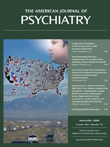The title The Quiet Revolution in American Psychoanalysis aptly describes the more than half-century-long impressive transformation of psychoanalysis in America, from the discipline and profession created almost single-handed by the prodigious life’s work of Sigmund Freud, its founder—who at the same time maintained its inherent continuity and identity within change—to Arnold Cooper, psychoanalytic clinician, theoretician, and educator, who is both a vivid chronicler of as well as prominent contributor to that story of maintained continuity within transformative change.
This volume, marvelously edited by Elizabeth Auchincloss—who herself contributes a most informative introduction about Cooper as a man and friend as well as scientific luminary—comprises 19 of Cooper’s most significant articles from an overall oeuvre of some 140 listed in the bibliography. Cooper’s body of work is divided into four major thematic areas: 1) the description of the unfolding “quiet revolution” over time; 2) the boundaries with cognate disciplines of knowledge of human mental functioning in their own evolving, mutually enriching interactions with psychoanalysis; 3) the important clinical contributions of Cooper focused around his insightful exploration of the powerful linkages between the narcissistic and the masochistic facets of character functioning, both in health and illness; and 4) finally, the changing ways of psychoanalytic working under the impact of the half-century of continuing change in analytic theorizing internally and altering sociocultural context externally.
In all this, we clearly see Cooper at a nodal position, as both psychoanalytic contributor and as forceful expositor of contemporary psychoanalytic thinking and practice as it has evolved over the more than half-century of his active involvement and, at the same time, as a psychoanalyst who has always maintained his deep psychiatric roots, which are marked by his many years as director of education in a major medical school department of psychiatry and, simultaneously, his many years as an associate and deputy editor of The American Journal of Psychiatry . We also see that he maintained his voice as a major proponent of the continuing place of psychoanalysis as the provider of a comprehensive explanatory psychology for psychiatry, a crucial pillar for understanding and therapeutic practice within the tripartite biopsychosocial model. Cooper’s outstanding success is amply demonstrated in his direct, lucid, descriptive, and explanatory language, translating what can be the all too complex jargon of in-house psychoanalysis into directly understandable and useable knowledge of human mental functioning and of what can be done to mitigate its malfunctioning. This book is one of special value for the psychiatric practitioner.

